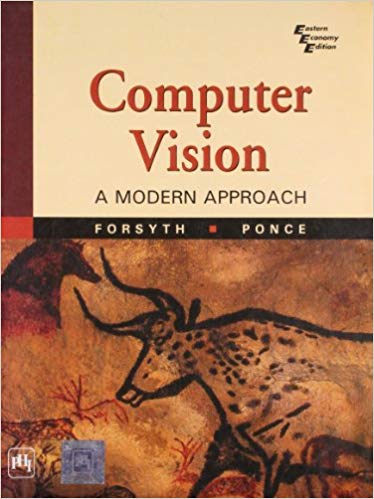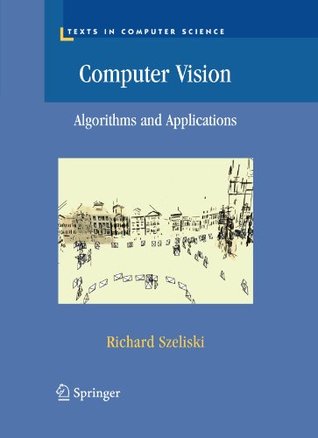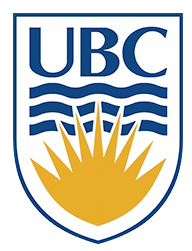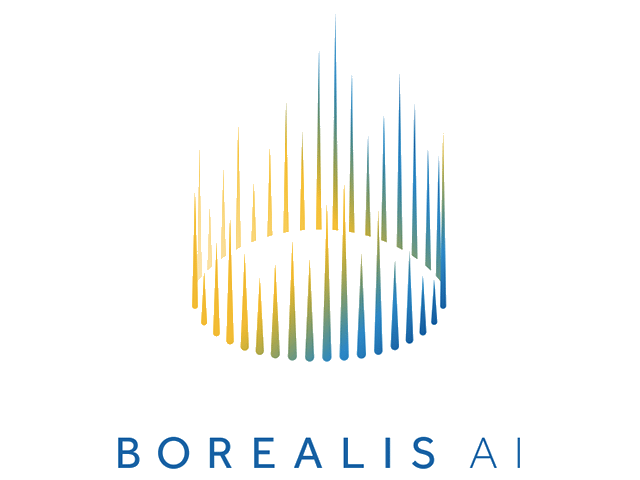Computer Vision (CPSC 425)
Winter Term 2, 2022-23

Course Information
Computer vision, broadly speaking, is a research field aimed to enable computers to process and interpret visual data (namely in the form of images and video), as sighted humans can. It is one of the most exciting areas of research in computing science and among the fastest growing technologies in today's industry. This course provides an introduction to the fundamental principles and applications of computer vision, including image formation, sampling and filteering, colour analysis, single and multi-image geometry, feature detection and matching, stereo imaging, motion estimation, segmentation, image classification and object detection. We'll study basic methods and application of these concepts to a variety of visual task.
- Instructor:
- Leonid Sigal
(
lsigal@cs.ubc.ca)
Office hours: Friday noon-1pm (hybrid) - TAs:
- Bereket Guta
(
bguta@cs.ubc.ca)
Office hours: Monday, 2-3pm (hybrid) - Rayat Hossain
(
rayat137@cs.ubc.ca)
Office hours: Tuesday, noon-1pm (hybrid) - Gaurav Bhatt
(
gbhatt@cs.ubc.ca)
Office hours: Wednsday, 4-5pm (hybrid) - Aditya Chinchure
(
aditya10@cs.ubc.ca)
Office hours: Thursday, 10-11am (hybrid) - Bicheng Xu
(
bichengx@cs.ubc.ca)
Office hours: Friday, 4-5pm (hybrid) - Class meets:
- Monnday and Wednesday 3:30 - 5:00 pm,
Friedman (FRDM), Room 153 - Piazza
- piazza.com/ubc.ca/winterterm22023/cpsc4252012022w2
- piazza.com/ubc.ca/winterterm22023/cpsc4252012022w2/home (class link)

|
Textbook
Recemended (but not required):
 |
 |
| Computer Vision: A Modern Approach (2nd edition), by D.A. Forsyth and J. Ponce, Pearson, 2012. (buy) | Computer Vision: Algorithms and Applications, by R. Szeliski, Springer, 2010. (download) |
Note that while reading is not required, it will generally lead to broader understanding of the topics covered in class. I would suggest reading relevant chapters once they are covered in the lecture.
Grading
| Quizzes | 10% |
| Assignments | 45% |
| Midterm exam | 15% |
| Final exam | 30% |
Grade Disputes, Re-grading and Grade-related Policies: Despite best efforts, sometimes miss-grading does happen. All grade disputes and re-grading must be brought to instructor's or TA's attention within 1 week of the grade being released. All such requests must be done through a Piazza as a direct post to the instructors. You must clearly identify the issues and describe why you believe re-grading is warranted. Similarly, if you have a ligitimate excuse for missing a Clicker quiz, please let instructor know and provide appropitate evidance within 1 week of the original quiz date. Note that Clicker quiz missed for ligitimate and documented reason (e.g., attandance of conferences, sickness, travel for job interview) will simply be dropped. You will be asked to provide supporting documentation (note from a doctor, travel and conference registration, etc.). There will be no make-ups for missed Midterms.
Assignments (45% of the grade)
All assignments are to be done individually. There are 6 graded (and 1 ungraded) asssignment each worth the same amount. The ungraded assignment is Assignment 0. Assignment 1 to 6 are graded.
Late Policy: Every student is allotted three ``late days'', which allow assignments to be handed in late without penalty on three days or parts of days during the term. The purpose of late days is to allow students the flexibility to manage unexpected obstacles to coursework that arise during the course of the term, such as travel, moderate illness, conflicts with other courses, extracurricular obligations, job interviews, etc. Thus, additional late days will NOT be granted except under truly exceptional circumstances. If an assignment is submitted late and a student has used up all of her/his late days, 25% will be deducted for every day the assignment is late. (e.g., an assignment 2 days late and graded out of 100 points will be awarded a maximum of 50 points.) How late does something have to be to use up a late day? A day is defined as a 24-hour block of time beginning at 10 minutes past 11:59pm on the day an assignment is due. To use a late day, write the number of late days claimed on the first page of your assignment. Examples: Handing in an assignment at 1am the night assignment is due will use up 1 late day. Handing in an assignment at 10:15am the morning after it is due similarly consumes one late day. Handing in an assignment at 10:15am on the following day consumes two late days.
Expectations: To get top marks, programs must not only work correctly, but also must be clearly documented and easily understood. Marks may be deducted for lack of comments. Note that default comments provided in starter files are not considered sufficient for full credit. You will be deducted points if either the PDF writeup or your code are missing. The material you hand in, including figures, must be legible.
| Assignment | Available | Due |
| Assignment 0: Introduction to Python for Computer Vision (link) | Jan 9 | optionally Jan 16 |
| Assignment 1: Image Filtering and Hybrid Images (link) | Jan 16 | Jan 30 |
| Assignment 2: Scaled Representations, Face Detection and Image Blending (link) | Jan 30 | Feb 13 |
| Assignment 3: Texture Synthesis (link) | Feb 13 | Mar 6 |
| Assignment 4: RANSAC and Panorama Stiching (link) | Mar 6 | Mar 17 |
| Assignment 5: Scene Recognition with Bag of Words (link) | Mar 17 | Mar 30 |
| Assignment 6: Deep Learning (link) | Mar 29 | Apr 13 |
| (please note that these dates are given as guidelines and are subject to change) |
Schedule
| Date | Topic | Reading |
| W1: Jan 9 | Introduction: Intro to computer vision, Course logistics (slides) | None |
| W1: Jan 11 | Image Formation: Pinhole, Perspective, Weak perspective and Orthographic projection, Lenses (slides) | Forsyth & Ponce, 1.1.1 -- 1.1.3, 2.1 |
| Week 1 Lecture Notes: Image Formation | ||
| W2: Jan 16 | Image Formation: Lenses, Human Eye (slides) Image Filtering: Image as a function, Image transformations, Linear filters, Correlation and Convolution(slides) (optional) Assignment 0: Introduction to Python for Computer Vision |
Forsyth & Ponce, 1.1.4, 1.2.1, 4.1 |
| W2: Jan 18 | Image Filtering: Gaussian filter, Separability, Pillbox filter, Speeding up Convolution, Fourier representation (slides) | Forsyth & Ponce, 4.2, 4.3 |
| Week 2 Lecture Notes: Filtering | ||
| W3: Jan 23 | Image Filtering: Speeding up Convolution, Low-/High-Pass, Non-linear Filters, Bilateral Filter (slides) | |
| W3: Jan 25 | Sampling: Sampling Theory, Bandlimited Signal, Nyquist Rate, Aliasing, Color Filter Arrays, Demosicing (slides) | Forsyth & Ponce, 4.4 |
| Week 3 Lecture Notes: FFT, Sampling, Cameras | ||
| W4: Jan 30 |
Scaled Representations: Template Matching, Image Pyramids, Gaussian Pyramid, Laplacian Pyramid (slides) Assignment 1: Image Filtering and Hybrid Images |
Forsyth & Ponce, 4.5, 4.6, 4.7 |
| W4: Feb 1 | Scaled Representations (cont): Laplacian Pyramids, Image Blending, Improving Template Matching (slides) | Forsyth & Ponce, 5.1 - 5.2 |
| W5: Feb 6 | Local Image Features: Image Gradients, Sobel, Marr / Hildreth Edge Detection, Canny Edge Detection, Image Boundaries (slides) | Forsyth & Ponce, 5.1 - 5.2 |
| W5: Feb 8 | Local Image Features: Autocorrelation, Harris, Blob Detection, Characteristic Scale (slides) | Forsyth & Ponce, 5.3.0 -- 5.3.1 |
| Week 5 Lecture Notes: Derivatives, Edge Detection, Corner and Blob Detection | ||
| W6: Feb 13 |
Local Image Features: Blob Detection, Characteristic Scale (slides) Texture: Synthesis, Analysis (slides) Assignment 2: Scaled Representations, Face Detection and Image Blending |
Forsyth & Ponce, 6.1, 6.3, 3.1--3.3 |
| W6: Feb 15 | Texture: Analysis (slides) Midterm Review (slides) |
Forsyth & Ponce, 3.1--3.3 |
| W7: Feb 20 | Midterm Break (no class) |
|
| W7: Feb 22 | Midterm Break (no class) |
|
| W8: Feb 27 | Midterm |
|
| W8: Mar 1 | Features Matching : SIFT, HOG, SURF, Object Detection (slides) | Forsyth & Ponce, 3.1--3.3, 5.4 and SIFT |
| Week 8 Lecture Notes: SIFT | ||
| W9: Mar 6 |
Model Fitting: Image Alignment, RANSAC, Object Detection (slides) Assignment 3: Texture Synthesis |
Forsyth & Ponce, 5.4, 10.4.2, 10.1, 10.2 |
| W9: Mar 8 | Model Fitting : Hough Transform (slides) | Forsyth & Ponce, 5.4, 10.4.2, 10.1, 10.2 |
| W10: Mar 13 | Stereo: Rectification, Block Matching, Ordering Constraints, More Cameras (slides) | Forsyth & Ponce, 10.6, 6.2.2, 9.3.1, 9.3.3, 9.4.2 |
| W10: Mar 15 | Optical Flow: Introduction, Aperture Problem, Lucas-Kanade, Horn-Schunck (slides) | |
| W11: Mar 20 |
Classification: Bayes' Rule, Bayes' Risk, Loss Functions, kNN, Support Vector Machines, Bag of Words Representations (slides) Assignment 4: RANSAC and Panorama Stiching |
|
| W11: Mar 22 | Classification: Review, Case study on CIFAR 10, Decision Trees, Boosting (slides) | |
| W12: Mar 27 | Object Detection: Viola & Jones Face Detector (slides) Neural Networks: Neuron, Neural Nets (slides) |
|
| W12: Mar 29 | Convolutional Neural Networks: Backpropagation, Convolutional Layers (slides) | |
| W12: Mar 30 | Assignment 5: Scene Recognition with Bag of Words |
|
| Week 12 Lecture Notes: Neural Networks | ||
| W13: Apr 3 | Convolutional Neural Networks: Convolutional Layers, Pooling Layers, Applications (slides) | |
| W13: Apr 5 | Convolutional Neural Networks: Detection, Segmentation, Applications (slides) | |
| W14: Apr 10 | NO CLASS |
|
| W14: Apr 12 | Color : Color Matching, Color Spaces (RGB, XYZ, HSV) (slides) Review : Various topics (not all topics are covered, but a good asortment) (slides) |
Forsyth & Ponce, 3.1--3.3 |
| W14: Apr 13 | Assignment 6: Deep Learning |
Academic Conduct
Each student is responsible for understanding and abiding by the University and Departmental policies on academic conduct. Any violations of such policies will be punishable according to the guidelines. Specifically:
- Computer Science Department Policies on Academic Integrity
- UBC policy on Academic Misconduct
- Computer Science Department Policies on Equality, Inclusion and Wellness
- Computer Science Department Policies and Responsibilities.


